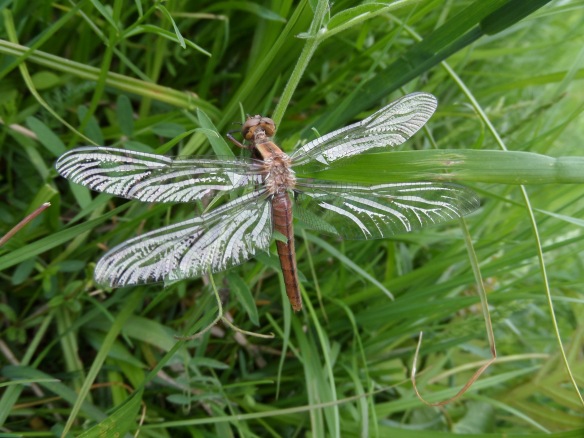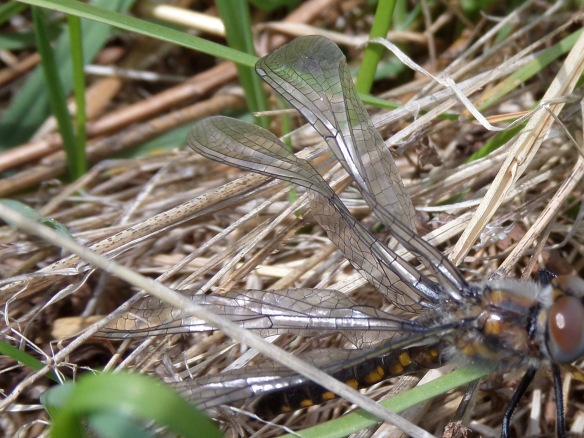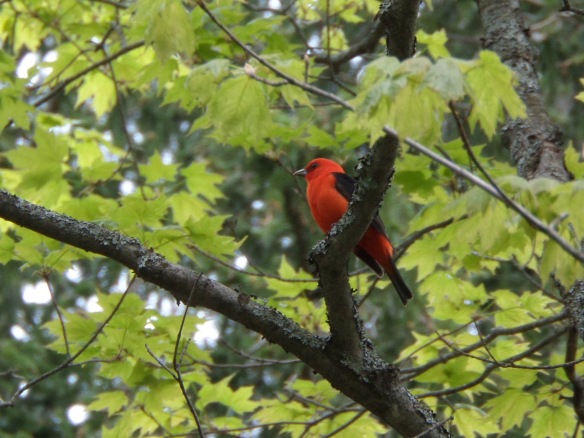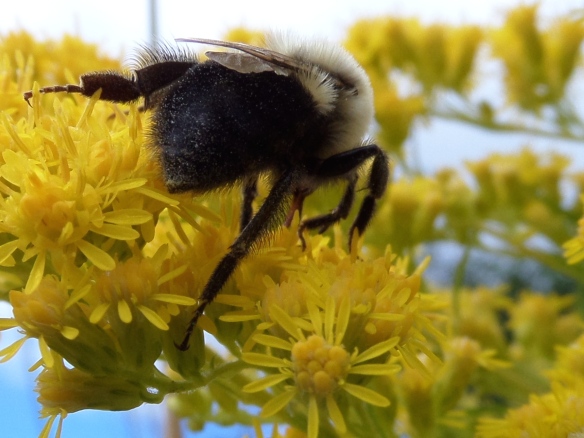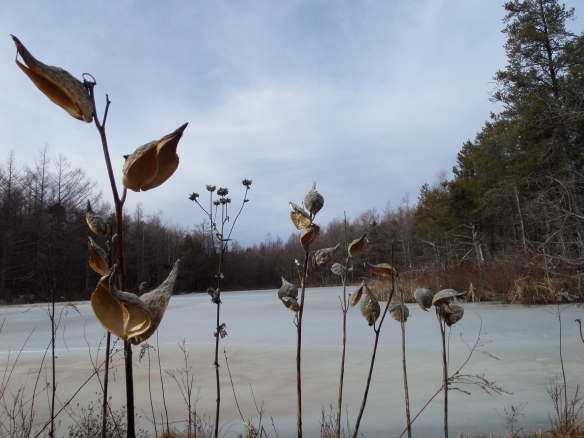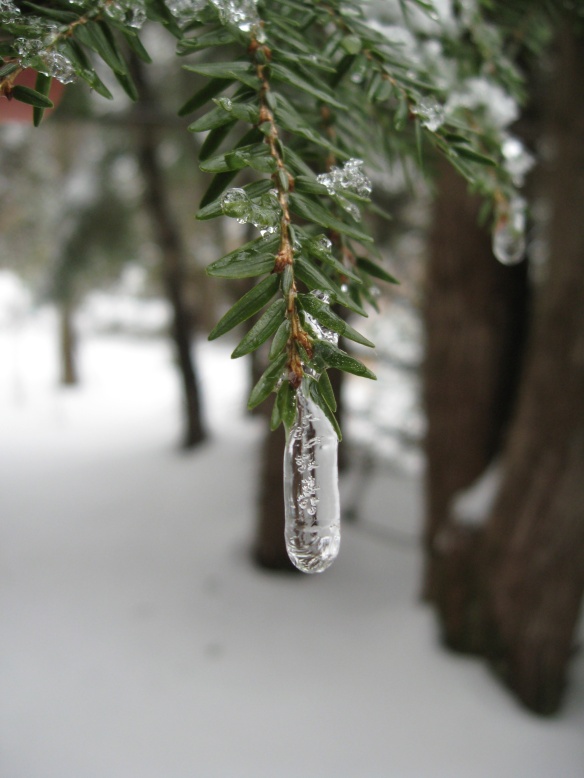
One of several trees that greet you at the entrance to the labyrinth.
A meditation labyrinth is a winding path, but unlike a maze, the traveler knows she will follow the course to the center and traverse the same path out with no fear of becoming lost. People have walked labyrinths of various forms for millennia; as they amble, they seek answers to particular questions, or to touch their G/god or Spirit or inner being.
When I began my weekend retreat at Kripalu Yoga Center last Friday with a walk in the outdoor labyrinth, I thought about self-definition, and work.
Winding the curves, tears dripped down my cheeks: I don’t want to get to the center— because then I will have to come back out, and I’m not sure what I will discover about myself in the process, specifically, my options for future paid work. Recently, before I even claim any idea as a “possible next career,” I’ve gotten scared, run away from thinking, watched too much TV, over-filled the schedule or just done nothing.
Achy and stiff, I haven’t participated in my usual yoga classes at home and have avoided extended concentration on breath and difficult positions. Yoga has merely served as a stretching regimen a couple times a week. Last year in the autumn my body was so much more mobile, technically and muscularly strong in the postures, and confident. Lighter, too.
Old habits of anxiety haunt me, a drive to squeeze everything I can out of this time away, to find answers to my questions. But at what expense? I ask as I wander. To feel the drivenness more than the experience?
I notice that there are more reds in the trees here than in New York; the weeping trees quiver with neon orange, yellow and green in their seasonal change; shadowy evergreens cover the Berkshire mountains behind the labyrinth. Exiting, the view stretches wide, with a broad grassy hill up to buildings where the first session, and then dinner, then more yoga, await me.

A community of grasses accompanies you.
I wish I’d been conveniently struck by some slam-bang inspiration about work while in the labyrinth, but then in yoga class the falsehood is revealed that when you discover something, you are then finished or complete–an impossibility, because we are constantly changing, and the world is constantly changing. The instructor reminded: take your time, make your own choices, move how you want to, experiment!
The intense physical activity scrubs me clean and pares me down, open to see daily life as simultaneously not that important and amazingly huge, miraculous, splendid. The sixth sense, we are told, is Awareness. Yoga calls me to the corporeal plane, and the spiritual plane, and beyond that, even–but by 10 pm I am so tired and roiling in self-judgment, it hurts.
Washing up before bed, I remember: when my best friend visited a few weeks ago, she commented, You believe you are not moving fast enough with this puzzle. But for the first time in your life you are looking at each piece and not trying to press it in the form right away, instead asking does it fit? does it even belong in this puzzle?
I want to trust that the picture will emerge. Mostly I believe it will, but I’ve been sidelined and undermining myself, avoiding “the work thing” because I have been afraid–of failing, or finding a big nothingness at the center of myself and my search.
The next day, during the Kundalini yoga, in the repeating pose of punches-through-an obstacle, I strike through the negative messages, through self-doubt into compassion for myself, thus revealing a glorious version of Me. It is repeated: Revelation will come and there will always be more to understand and grow into.
As we tell our life stories during lunch, my roommate remarks on my tenacity, and offers unexpected observations about my skills.
In a Kripalu Yoga session, frank acknowledgment that everyone suffers heart break leads to a vision of the body as energetic river, where damage from that pain has an impact, but can be repaired.
Words from the Prana Flow teacher: Move with courage into whatever life brings. Practicing yoga can give you confidence that we know nothing. Spending time with yoga itself will give us “nothing”–but through breathing, doing asanas (poses), and other practices, we can tap into the teacher we have within us. A bit theoretical, hopeful, maybe even too far-out. But I like it.
After fourteen hours of yoga in two-and-a-half-days, hours of breathing and meditation and strengthening of the body and compassion toward myself, listening to the body and listening to the body some more, having my value reflected back to me by others and myself–I approach the labyrinth once again, to close the weekend.
I stop at each planting on the way in: sets of willows, vanilla-cupcake-colored, Seuss-ian tufts of grasses flopping in the wind, and some unidentified saplings; I reach out to touch each one in turn, and step to the next pair, like a slow procession up a church aisle, until I come to the labyrinth entrance, stroke the wood of the arch and walk through.

Seuss-ian soft grass-tops.
I deliberately slow my gait, returning to the meditative walking that I’ve read about: sense the heel touch the ground, roll through the middle, and let the toes make contact. Then don’t do the expected forward movement, just rest there; then, pick up the other foot, shift weight and move. One step. Pause. One step. Pause. One step.
I brush against a bushy bottomed evergreen, and it felt like I was joshing a friend, approaching a teenage boy uncomfortable with hugs, him pushing his shoulder against mine, Hey, dude, whuzzup?, a camaraderie with the trees, like we were buddies, old pals, kidding around with each other, glad to see each other, relieved actually. So I stop to give each head-high evergreen a gentle shoulder bump and a half-smile of recognition.
Following that, I tromp, wide-hipped, swinging my legs with energy. Clomp-clomp-clomp. Then stand, smelling the musty grasses dry in their rustling, slipping their feathery lengths through my fingers. Next, glide forward slowly again, with few tears, in fact triumphant, bubbling over some with alternative ideas and ways of looking at Work. Think to myself with a sigh: god knows I will run into obstacles and I may be completely wrong about the possibilities, but I’ll use the yoga practice–no, I’ll just DO it, and through that, trust I will get to know how I feel about things; motivate myself by being in touch with my body–no, I’ll NOTICE motivation and excitement from within, seeing and leaving behind the berating messages, the patterns of avoidance–cleansing with breath, clearing, opening; like the trees are changing and opening to the heavy gray fall sky over lake and mountain here in the Berkshires.
I resolve to create a new Practice in my life, instead of the old Routine: new ways of walking through my days and taking care of myself. Cup of hot tea with honey in hand, I drive back home.
Of course next day I am exhausted by the weekend, and then overstimulated by classes at the computer store: required to be intellectual before I am ready, blasted by the fluorescent lights, too-loud Muzak, and super-saturated color. The coming rainstorm from Sandy pushes me to watch old episodes of Glee “while I can” and then the darned electricity never goes out! and I worry I have fallen right back into all my old habits.
But–every day I’ve eaten well, gone into my yoga room and felt the muscles loosen along with my busy mind, remembered what my community of yoga teachers taught me, heard their laughing voices, and breathed compassion toward myself. Started again with the next moment.
Yes, life is a series of beginnings, to be taken puzzle piece by puzzle piece, step by step, breath by breath. Perhaps life is also a series of puzzles, where the fun, the point, is putting it together, not the final image.
I am confident I know nothing. I have entered the labyrinth, journeyed to the center, and come back out. I’m holding the puzzle pieces, thinking.

A far-away view of the labyrinth, after you re-enter the world.







